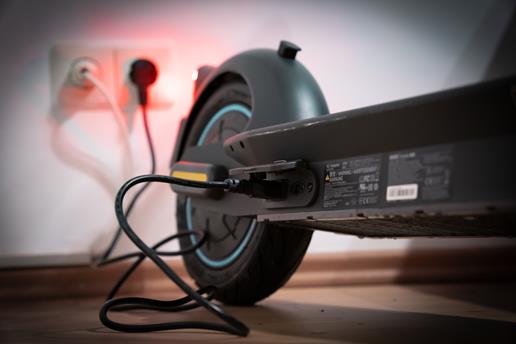
Lithium-ion battery fires have been the subject of growing concern across WA. As of August 2025, we have had 94 battery fires reported, a number almost double the 49 incidents recorded in the entire of 2020.
These fires have been sparked by everyday items such as laptops, power banks, power tools, and increasingly, e-rideables such as e-bikes and e-scooters.
The Department of Fire and Emergency Services (DFES) have warned that nearly a third of these fires occurred when batteries were not even charging, highlighting the truly unpredictable nature of this emerging hazard.
Why does this happen?
Lithium-ion batteries can enter a dangerous state known as 'thermal runaway', causing them to overheat, explode, or emit toxic gases. This is commonly triggered by poor-quality, damaged, or overcharged batteries.
It is important for members to be aware of and manage this growing risk and adapt to the challenges it presents. For local governments who include, or are considering including, e-scooters and e-bikes in their grey fleets this is especially relevant. These devices require careful maintenance and safe charging practices to prevent fire risks.
What can we do to manage the risk?
Safe charging practices: Always charge batteries on hard, non-flammable surfaces such as benches or tables, preferably in well-ventilated areas like garages or patios. Never leave batteries unattended while charging and disconnect them as soon as they reach full charge.
Use certified equipment: Only use chargers and batteries that meet Australian safety standards and bear the Regulatory Compliance Mark (RCM). Avoid cheap or uncertified products, especially those purchased overseas.
Designated charging areas: Establish dedicated, well-ventilated charging zones away from administrative offices and egress routes. Indoor charging areas should have fire-resistant compartments and be spaced at least 10 metres from combustible materials.
Regular maintenance and disposal: Inspect batteries and chargers regularly for signs of damage or swelling. Damaged equipment should be immediately removed from service and disposed of safely.
By prioritising these safety measures, members can protect their staff, property, and communities from the growing threat of lithium-ion battery fires.
For members seeking more information please contact our people risk team or your regional risk specialist. Additionally, please see the following LGIS resources which can be found on the Property Risk Management Page.